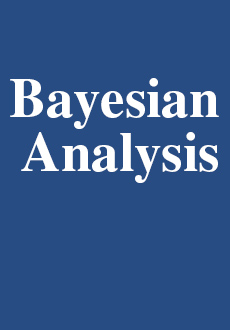Abstract
The COVID-19 pandemic has caused severe public health consequences in the United States. In this study, we use a hierarchical Bayesian model to estimate the age-specific COVID-19 attributable deaths over time in the United States. The model is specified by a novel non-parametric spatial approach over time and age, a low-rank Gaussian Process (GP) projected by regularised B-splines. We show that this projection defines a GP with attractive smoothness and computational efficiency properties, derive its kernel function, and discuss the penalty terms induced by the projected GP. Simulation analyses and benchmark results show that the B-splines projected GP may perform better than standard B-splines and Bayesian P-splines, and equivalently well as a standard GP at considerably lower runtimes. We apply the model to weekly, age-stratified COVID-19 attributable deaths reported by the US Centers for Disease Control, which are subject to censoring and reporting biases. Using the B-splines projected GP, we can estimate longitudinal trends in COVID-19 associated deaths across the US by 1-year age bands. These estimates are instrumental to calculate age-specific mortality rates, describe variation in age-specific deaths across the US, and for fitting epidemic models. Here, we couple the model with age-specific vaccination rates to show that vaccination rates were significantly associated with the magnitude of resurgences in COVID-19 deaths during the summer 2021. With counterfactual analyses, we quantify the avoided COVID-19 deaths under lower vaccination rates and avoidable COVID-19 deaths under higher vaccination rates. The B-splines projected GP priors that we develop are likely an appealing addition to the arsenal of Bayesian regularising priors.
Funding Statement
This work was supported by the Imperial College Research Computing Service, DOI: 10.14469/hpc/2232, the Imperial College COVID-19 Response Fund, the EPSRC through the EPSRC Centre for Doctoral Training in Modern Statistics and Statistical Machine Learning and the Imperial President’s PhD Scholarships. S. Bhatt acknowledges funding from UK Research and Innovation (MR/V038109/1), the Academy of Medical Sciences Springboard Award (SBF004/1080), The MRC (MR/R015600/1), the Bill & Melinda Gates Foundation (OPP1197730), Imperial College Healthcare NHS Trust-BRC Funding (RDA02), the Novo Nordisk Foundation (NNF20OC0059309) and the NIHR Health Protection Research Unit in Modelling Methodology; and O. Ratmann acknowledges funding from UK Research and Innovation (MR/V038109/1) and the Bill & Melinda Gates Foundation (OPP1175094).
Version Information
This article was first posted with a typo at the start of Section 2.1, just after equation (2.2): the authors wrote “(daily deaths, d, for state m, in age group b, on week w).” while it should be “(weekly deaths, d, for state m, in age group b, on week w).”. The typo was corrected on 2022-10-17.
Acknowledgments
We thank Sam Abbott, the editor and two anonymous reviewers for their helpful comments.
Citation
Mélodie Monod. Alexandra Blenkinsop. Andrea Brizzi. Yu Chen. Carlos Cardoso Correia Perello. Vidoushee Jogarah. Yuanrong Wang. Seth Flaxman. Samir Bhatt. Oliver Ratmann. "Regularised B-splines Projected Gaussian Process Priors to Estimate Time-trends in Age-specific COVID-19 Deaths." Bayesian Anal. 18 (3) 957 - 987, September 2023. https://doi.org/10.1214/22-BA1334
Information





